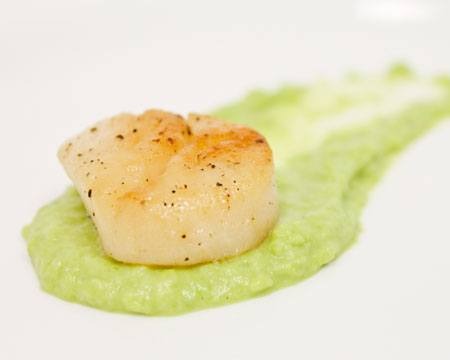5 Sublime Scallop Recipes
This week, The Daily Meal was lucky enough to receive some fantastic frozen scallops from America's Farmstand, an online purveyor of fine produce, meats, seafood, and cheeses, so we came up with five original scallop recipes for you to try at home that are easy and delicious. Be sure to try this week's winning recipe from Ali Rosen, Thyme-Infused Butter Scallops.
Click here to see the 5 Sublime Scallop Recipes Slideshow
Scallops come in a few varieties, colors, and sizes, but the one that stands out in most people's minds is the sea scallop, perfectly seared with a golden brown crust and a juicy interior that's ever so slightly raw in the center. But for anyone who's tried to cook scallops for the first time at home and ended up with less than ideal results — a dried out, rubbery interior and no crust on the outside — trying again can seem like a frustrating (and not to mention, costly) exercise.
With the right technique, though, scallops are actually pretty easy to cook. Basically, it comes down to three things: fat, heat, and timing.
But first, prep. If you're not using fresh or dry-packed scallops, you'll want to give them a good rinse first, as they may have been soaked in a preservative that lends a soapy flavor. Then, pat them dry — otherwise, they'll steam instead of turning nice and golden brown when they hit the pan. Lastly, make sure to remove the tough muscle on the side of the scallop with a paring knife.
Fat. Choosing a fat with a high smoke point is important. This isn't the time to be cooking with extra-virgin olive oil (a questionable practice in general). Instead, use clarified butter, bacon fat, or in a pinch, canola or vegetable oil. Canola oil isn't a bad choice; it just won't impart any flavor to the scallops.
As for straight butter on its own, that can be tricky since the solids may burn, but if you're using it, just keep an eye on the heat and make sure to let the foam subside before adding the scallops to the pan; otherwise, the excess moisture will keep the scallops from searing properly and achieving that coveted crust. Another trick you can use is to cut the butter with a bit of canola oil, which will raise its smoke point.
Heat. Crank it up as high as it will go and make sure it stays that way. A heavy-bottomed pan works best for even heat distribution. Let the pan heat up before you add the fat (unless you are using straight butter) and let the fat heat up before you add the scallops, but don't let it smoke. Add the scallops without crowding them, and don't touch them!
Timing. It's worth repeating again — don't move them! Otherwise, you either won't get any crust at all, or the crust will break, giving it a blotchy appearance. Flip using a pair of tongs or a flexible, metal fish spatula when the white starts to creep up the sides of the scallops just slightly more than halfway; you only need to achieve a crust on the "presentation side," which is the side that will be facing up on the plate. At this point, just use residual heat to finish cooking the other side, so after you flip, take the pan off the heat and let the scallops continue cooking for a minute or two.
Click here to see Recipe SWAT Teams From the Past
Will Budiaman is the Recipe Editor at The Daily Meal. Follow him on Twitter @WillBudiaman.
